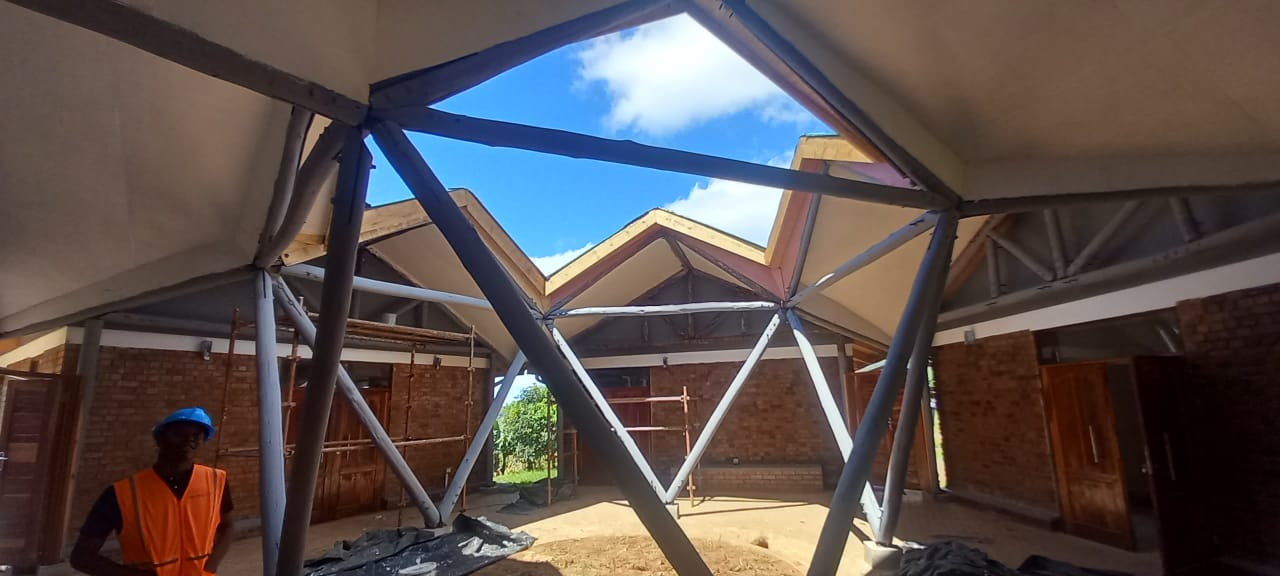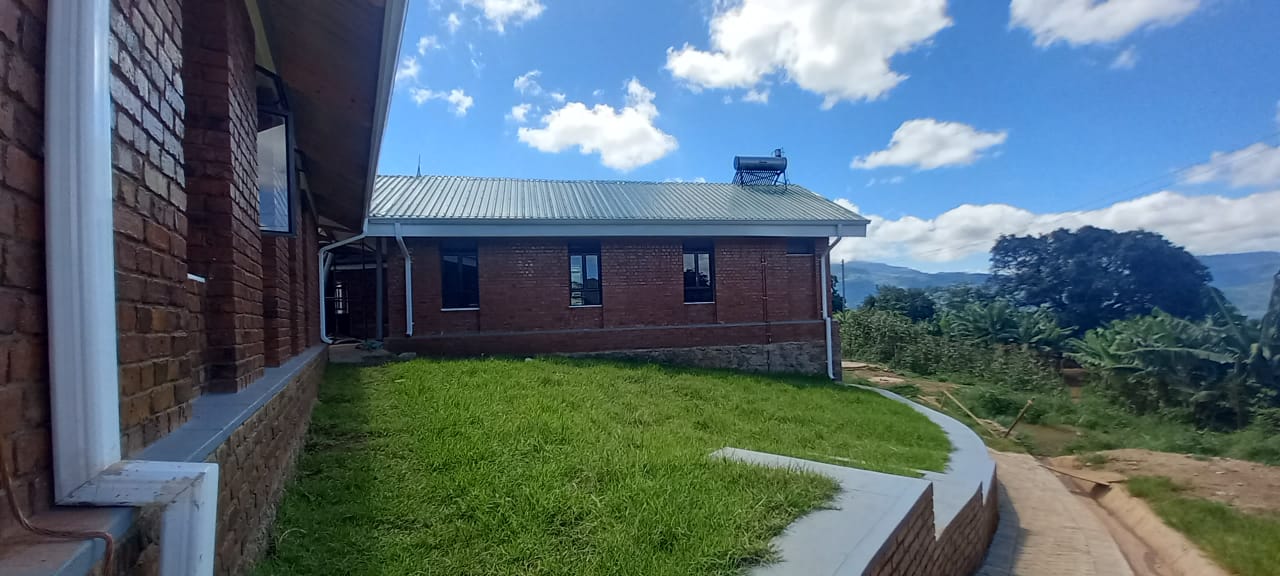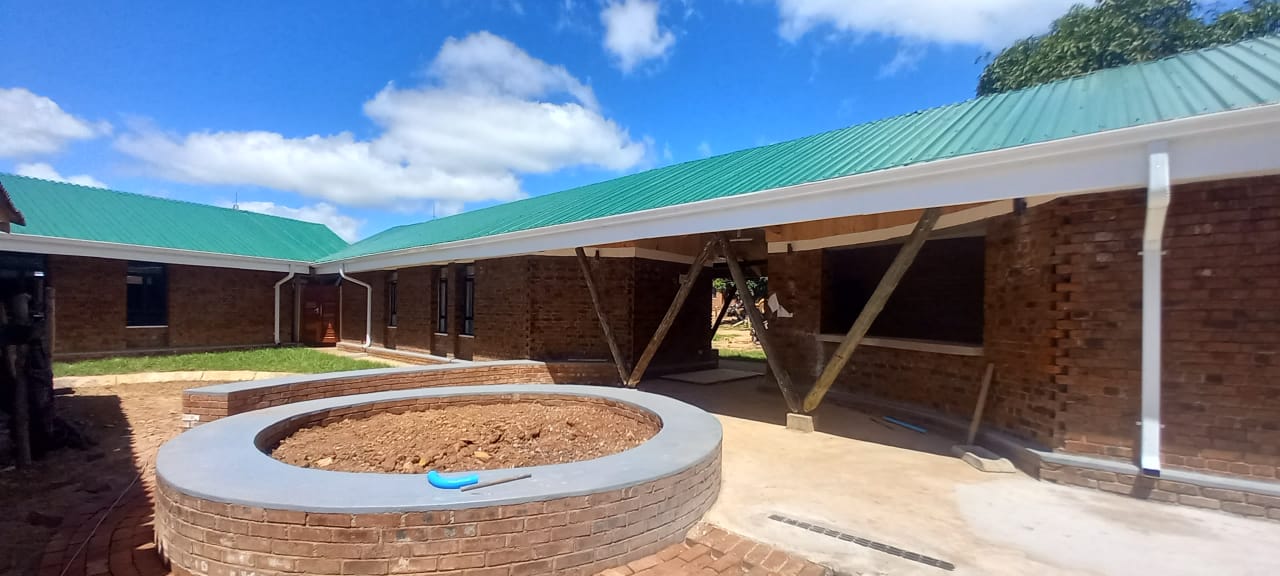Participatory design in action
Completion of the Mutsvangwa Clinic this month showcases the benefits of design processes which consult the community on their needs.

This month, a major milestone was reached under the ZIRP with the completion of Mutsvangwa Maternal Health Clinic in Ward 23, Chimanimani District.
Located approximately 10 kilometres from the Mozambican border, the Mutsvangwa Clinic serves a local population of around 11,000, where child marriage is common and early pregnancies often put young girls at risk of maternal death and infant mortality. The lack of healthcare facilities in the region has reinforced the cultural practice of home births by traditional midwives – practitioners who lack the medical training to deal with complications when they arise. As a result, Mutsvangwa Clinic often receives women in the midst of complicated births, putting pressure on their limited facilities.
Identified as a priority site for building back better after Cyclone Idai, clinic staff were delighted by the news that the ZIRP would carry out infrastructure improvements and create an environment to better support its patients. UNOPS contracted Mass/NLE, an African design consortium, and together with UNOPS, decided that a participatory design process was essential for this project.
Composed of interviews and focus group discussions with nurses, patients, health committees, committees, and local government officials, participatory design draws valuable information directly from beneficiaries in order to inform interventions. It is especially important in serving women, people living with disabilities, and other marginalized groups.
“Participatory design enables women to be directly involved in the decision-making process.” explains Felida Nkhoma, Community Mobiliser at UNOPS Zimbabwe. “It means that what they feel is important for them to give birth safely is taken into account. And it provides a sense of ownership in the project.”
The process brought several concerns to light. Participants highlighted that a lack of space was discouraging mothers from attending the clinic, due in part to strong cultural beliefs in the importance of safety from witchcraft during pregnancy, as well as the expectation to manage the pain of labour in a private environment, free from external judgement. “Mothers want privacy during the labour process as they fear that people who hear them and see them screaming will go about telling everyone,” reported one team member. “Culturally, women are told to endure the pain and not scream so as to show how strong they are.”
Stepping into the completed clinic, the design response to these problems is clear. With five buildings clustered around a central canopy structure, the new clinic incorporates segregated wings for labour and delivery, as well as partitioning to prevent crowding. In addition, a dedicated space has been created for expectant mothers to come with their partners or mothers while they wait to give birth. Given the long distances and weak road infrastructure in the region, early arrival at the clinic ensures that mothers make the challenging journey while they are active and in good health.
“The rooms are spacious and airy as they have vaulted ceilings that allow maximum air circulation” said Onai Baudi, a UNOPS construction engineering technician who worked on this site. In addition, the project kept sustainability at the forefront throughout the construction process. “We used local materials such as timber for the trusses and the stone for the masonry units in the foundations” – materials which provide the strength and durability necessary for the regional climate, which is windy and cyclone-prone. “We are glad this project is completed, and very happy with the final product” he said.
The completion of the Clinic is a meaningful event for the surrounding community, as it will serve expectant mothers in the way that they need most. The valuable information gathered in the design process led to an outcome based on the specific needs of the community, ensuring an intervention that is sustainable, culturally appropriate, and fit for purpose.



